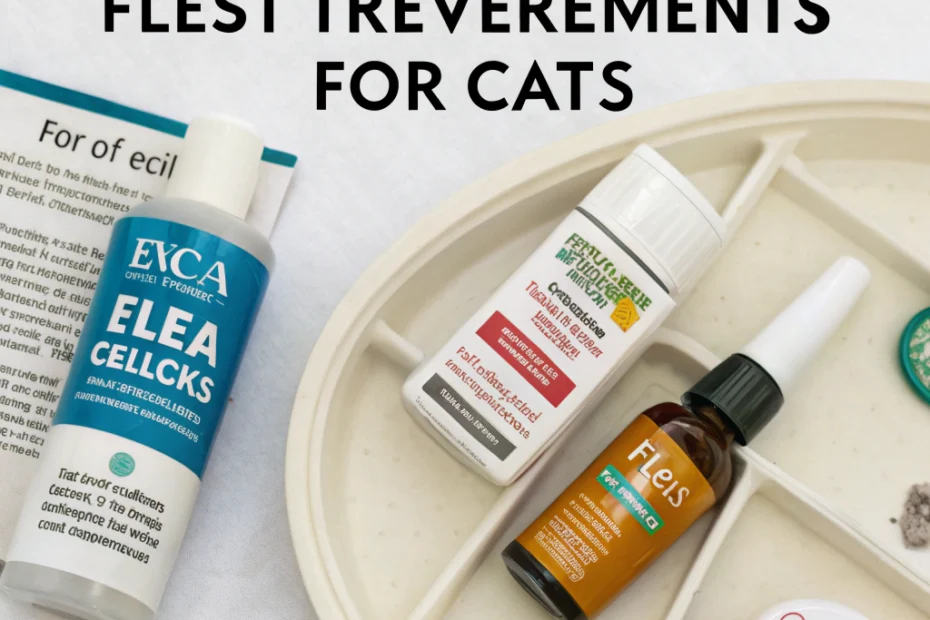At-a-Glance
Fleas and ticks are more than just a nuisance for cats; they can pose significant health risks. Finding the best flea and tick solutions for your feline friend is crucial in maintaining their overall health and comfort. This guide will help you understand the essentials of choosing and using these treatments effectively.
How to Choose
Selecting the best flea and tick treatment for cats involves several considerations. First, consider your cat’s age, weight, and health status. Some treatments are specifically formulated for kittens or senior cats, while others are designed for cats with specific health conditions. It’s important to read labels carefully and choose products that are appropriate for your cat’s specific needs.
Next, think about the type of treatment that will work best for your lifestyle and your cat’s temperament. Options include topical treatments, oral medications, and collars. Each has its pros and cons, and what works well for one cat may not be suitable for another. Topical treatments are commonly used for their ease of application, while oral medications can provide comprehensive protection. Collars offer a long-lasting solution but may not be suitable for all cats.
Safety & Setup
Ensuring the safety of flea and tick treatments is paramount. Always follow the manufacturer’s instructions and dosage recommendations. Applying more than the recommended amount can lead to adverse effects. Before applying any treatment, check for any potential allergies or sensitivities your cat may have. It’s also wise to monitor your cat after application for any signs of discomfort or adverse reactions.
Setting up a routine for flea and tick prevention can support your cat’s health. Regularly check your cat for signs of fleas and ticks, especially if they spend time outdoors. Consistent grooming and cleaning of your cat’s environment can help reduce the risk of infestations.
Core Pillars
The core pillars of effective flea and tick management include prevention, treatment, and maintenance. Prevention involves using treatments that deter fleas and ticks from infesting your cat. Treatment focuses on eliminating existing infestations, while maintenance ensures that your cat remains protected over time.
Prevention may involve using repellents or environmental controls, such as keeping your home and yard clean. Treatment often requires a combination of products to address both adult fleas and their eggs. Maintenance includes regular application of chosen treatments and monitoring your cat’s health.
Placement & Environment Tips
Where you apply flea and tick treatments can affect their efficacy. Topical treatments should be applied directly to the skin, usually at the base of the neck where your cat cannot lick it off. Ensure the area is dry before application for maximum absorption.
Creating a flea-free environment is equally important. Regularly vacuum your home, wash your cat’s bedding, and consider using environmental sprays or powders in areas where your cat spends most of their time. These steps can help break the flea life cycle and reduce the risk of reinfestation.
Comparison with Alternatives
When comparing flea and tick treatments, consider their effectiveness, ease of use, and cost. Topical treatments are popular for their ease of application and effectiveness, but they may require monthly reapplication. Oral medications can offer longer-lasting protection but may be more expensive. Collars provide a convenient, long-term solution but may not be suitable for all cats, especially those with sensitive skin.
Natural alternatives, such as essential oils or herbal sprays, are also available. While they may offer some level of protection, their effectiveness can vary, and they may not provide the same level of control as conventional treatments. Always consult with a veterinarian before using natural remedies to ensure they are safe for your cat.
FAQs
How often should I treat my cat for fleas and ticks?
Most treatments require monthly application, but always follow the specific instructions provided with your chosen product.
Can indoor cats get fleas and ticks?
Yes, indoor cats can still be at risk, especially if they live in multi-pet households or if fleas are brought in on clothing or other pets.
What are the signs of a flea or tick infestation?
Common signs include excessive scratching, visible fleas or ticks, and skin irritation. If you notice these signs, consult your veterinarian.
What to Do Next
Now that you have a better understanding of how to choose and use flea and tick treatments, consider assessing your cat’s current health and lifestyle needs. Consult with your veterinarian to determine the most suitable options for your cat. Regular check-ups and a proactive approach can help ensure your cat remains healthy and comfortable.
Disclaimer: Always consult your veterinarian for personalized advice regarding your cat’s health.
